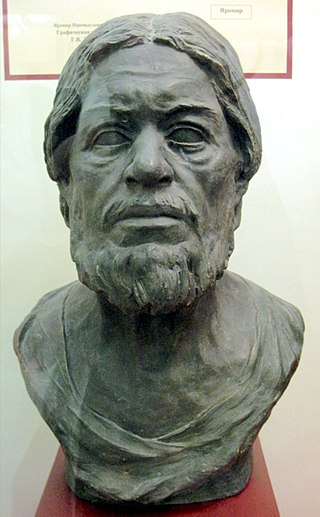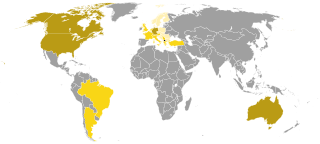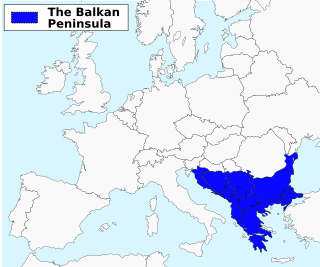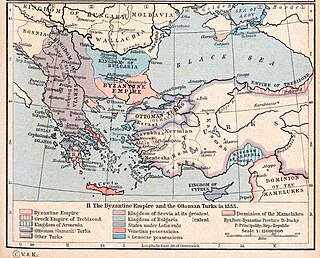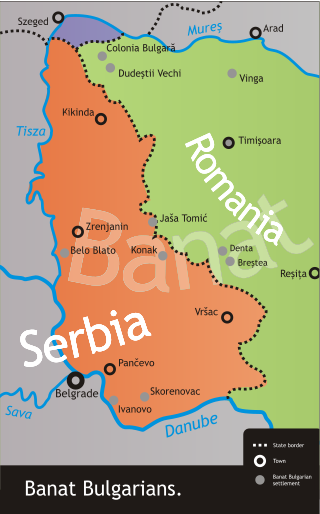| Name | Country of origin | Date | Place | Cause of death | Ref |
|---|
| Michael Asen IV | Bulgaria | 1355 | Sofia, Bulgaria | Killed in action | [1] |
| Vukašin Mrnjavčević | Serbia | 27 September 1371 | Maritsa, Bulgaria | Killed in action | [2] |
| Uglješa Mrnjavčević | Serbia | 27 September 1371 | Maritsa, Bulgaria | Killed in action | [3] |
| Alexander Komnenos | Serbia
(Ethnically Bulgarian-Greek) | 27 September 1371 | Maritsa, Bulgaria | Killed in action | [3] |
| Yanuka | Bulgaria | 1385 | Sofia, Bulgaria | Capital punishment | [4] |
| Balša II | Serbia | 18 September 1385 | Saurian field, Albania | Killed in action | [5] |
| Ivaniš Mrnjavčević | Serbia | 18 September 1385 | Saurian field, Albania | Killed in action | [5] |
| Lazar Hrebeljanović | Serbia | 15 June 1389 | Kosovo Field, District of Branković | Killed in action | [6] |
| Miloš Obilić | Serbia | 15 June 1389 | Kosovo Field, District of Branković | Dismemberment | [7] |
| Ivan Shishman | Bulgaria | 3 June 1395 | Nikopol, Bulgaria | Capital punishment | [8] |
| Jean de Carrouges | France | 25 September 1396 | Niğbolu, Ottoman Empire | Killed in action | [9] |
| Jean de Vienne | France | 25 September 1396 | Niğbolu, Ottoman Empire | Killed in action | [9] |
| Ivan Stratsimir | Bulgaria | 1397 | Bursa, Ottoman Empire | Strangulation | [10] |
| Philip I | France | 16 June 1397 | Bursa, Ottoman Empire | Died in captivity | [11] |
| Vuk Branković | Serbia | 6 October 1397 | Ottoman Empire | Died in captivity | [12] |
| Enguerrand VII | France | 18 November 1397 | Bursa, Ottoman Empire | Died in captivity from the bubonic plague | [13] |
| Vuk Lazarević | Serbia | 6 July 1410 | Filibe, Ottoman Empire | Capital punishment | [14] |
| Depë Zenebishi | Venice
(Ethnically Albanian) | 1436 | Ottoman Empire | Capital punishment | [15] |
| György Lépes | Hungary | 18 March 1442 | Marosszentimre, Hungary | Decapitation | [16] |
| Simon Kemény | Hungary | 25 March 1442 | Nagyszeben, Hungary | Killed in action | [17] |
| Władysław III | Poland | 10 November 1444 | Varna, Ottoman Empire | Decapitation | [18] |
| Julian Cesarini | Papal States | 10 November 1444 | Varna, Ottoman Empire | Killed in action | [19] |
| Franko Talovac | Croatia | October 1448 | Kosovo Field, Serbian Despotate | Killed in action | [20] |
| Antonio Rizzo | Venice | 8 December 1452 | Dimetoka, Ottoman Empire | Impalement | [21] |
| Gabriele Orsini | Venice | 1453 | Constantinople, Byzantine Empire | Killed in action | [22] |
| Giacomo Cocco | Venice | 28 April 1453 | Constantinople, Byzantine Empire | Killed in action | [23] |
| Constantine XI | Byzantine Empire | 29 May 1453 | Constantinople, Byzantine Empire | Killed in action | [24] |
| Theophilos Palaiologos | Byzantine Empire | 29 May 1453 | Constantinople, Byzantine Empire | Killed in action | [25] |
| Girolamo Minotto | Venice | 30 May 1453 | Istanbul, Ottoman Empire | Decapitation | [21] |
| Giovanni Giustiniani | Genoa | 1 June 1453 | Chios, Genoa | Died of wounds | [26] |
| Loukas Notaras | Byzantine Empire | 3 June 1453 | Istanbul, Ottoman Empire | Decapitation | [27] |
| Demetrios Palaiologos | Byzantine Empire | 3 June 1453 | Istanbul, Ottoman Empire | Decapitation | [28] |
| Andronikos Palaiologos | Byzantine Empire | 3 June 1453 | Istanbul, Ottoman Empire | Decapitation | [28] |
| Nikola Skobaljić | Serbia | 16 November 1454 | Banja, Serbia | Impalement | [29] |
| Michael Szilágyi | Hungary | 1460 | Istanbul, Ottoman Empire | Death by sawing | [30] |
| Niccolò Gattilusio | Genoa | 1462 | Istanbul, Ottoman Empire | Strangulation | [31] |
| Stephen II | Bosnia | 25 May 1463 | Carevo Polje, Bosnia | Decapitation | [32] |
| David Komnenos | Trebizond | 1 November 1463 | Istanbul, Ottoman Empire | Capital punishment | [33] |
| Bertoldo d'Este | Venice | 4 November 1463 | Chalcis, Venice | Died of wounds | [34] |
| Moisi Golemi | Albania | 1464 | Istanbul, Ottoman Empire | Flayed to death | [35] |
| Orsato Giustiniani | Venice | 1464 | Madone, Venice | Died of wounds | [36] |
| Vladan Jurica | Albania | April 1465 | Istanbul, Ottoman Empire | Flayed to death | [37] |
| Manuel Bochalis | | 1468 | Kalamata, Venice | Impalement | [38] |
| Paolo Erizzo | Venice | 12 July 1470 | Chalcis, Venice | Killed in action | [39] |
| Vlad III | Ottoman Empire
(Ethnically Romanian) | January 1477 | Snagov, Ottoman Empire | Killed in action | [40] |
| John de Bajna | Hungary | 29 August 1493 | Brinje, Croatia | Killed in action | [41] |
| Péter II | Hungary
(Ethnically Croatian) | 9 September 1493 | Krbava, Croatia | Killed in action | [42] |
| Emerik Derenčin | Hungary | 9 September 1493 | Krbava, Croatia | Killed in action | [42] |
| Ivan Cetinski | Croatia | 9 September 1493 | Krbava, Croatia | Killed in action | [42] |
| Abd al-Baqi Yazdi | Safavid Empire | 23 August 1514 | Chaldiran, Safavid Empire | Killed in action | [43] |
| Husayn Shamlu | Safavid Empire
(Ethnically Turkoman) | 23 August 1514 | Chaldiran, Safavid Empire | Killed in action | [44] |
| Mohammad Ustajlu | Safavid Empire
(Ethnically Turkoman) | 23 August 1514 | Chaldiran, Safavid Empire | Killed in action | [44] |
| Sayyed Shirazi | Safavid Empire | 23 August 1514 | Chaldiran, Safavid Empire | Killed in action | [45] |
| Ala Bozkurt | Dulkadir | 13 June 1515 | Turnadağ, Dulkadir | Killed in action | [46] |
| Qansuh II al-Ghawri | Mamluk Sultanate | 24 August 1516 | Dabiq, Mamluk Sultanate | Decapitation | [47] |
| Tuman Bay II | Mamluk Sultanate | 15 April 1517 | Bab Zuweila, Ottoman Empire | Hanging | [48] |
| Petar Berislavić | Croatia | 20 May 1520 | Plješivica, Croatia | Killed in action | [49] |
| Louis II | Hungary | 29 August 1526 | Mohács, Hungary | Killed in action | [50] |
| George Zápolya | Hungary | 29 August 1526 | Mohács, Hungary | Killed in action | [51] |
| Pál Tomori | Hungary | 29 August 1526 | Mohács, Hungary | Killed in action | [52] |
| Rodrigo de Portuondo | Spain | 28 October 1529 | Formentera, Spain | Killed in action | [53] |
| Niklas von Salm | Holy Roman Empire | 4 May 1530 | Salmhof, Holy Roman Empire | Died of wounds | [54] |
| Petar Kružić | Holy Roman Empire
(Ethnically Croatian) | 12 March 1537 | Klis, Holy Roman Empire | Killed in action | [55] |
| Ludovico Lodron | Venice | October 1537 | Ösek, Ottoman Empire | Decapitation | [56] |
| Pavle Bakić | Ottoman Empire
(Ethnically Serbian) | 9 October 1537 | Diakovár, Hungary | Killed in action | [57] |
| Ludovico Lodron | Holy Roman Empire
(Ethnically Italian) | 9 October 1537 | Diakovár, Hungary | Decapitation | [57] |
| Francisco de Sarmiento | Spain | 7 August 1539 | Castelnuovo, Spain | Killed in action | [58] |
| György Varkocs | Hungary | 2 September 1543 | Székesfehérvár, Hungary | Killed in action | [59] |
| Bálint Török | Hungary | 1551 | Istanbul, Ottoman Empire | Died in captivity | [60] |
| István Losonci | Hungary | 27 July 1552 | Temesvár, Hungary | Decapitation | [61] |
| Gergely Bornemissza | Hungary | 1555 | Istanbul, Ottoman Empire | Unknown | [62] |
| Martín de Alcaudete | Spain | August 1558 | Mostaganem, Ottoman Empire | Killed in action | [63] |
| Matija Bakić | Croatia | 23 June 1565 | Krupa, Holy Roman Empire | Killed in action | [64] |
| Banul Mărăcine | Ottoman Empire
(Ethnically Romanian) | August 1565 | Istanbul, Ottoman Empire | Strangulation | [65] |
| Nikola IV | Croatia | 7 September 1566 | Szigetvár, Hungary | Died from gunshot wounds to the head and chest by a musket | [66] |
| Ivan Lenković | Holy Roman Empire
(Ethnically Croatian) | 22 June 1569 | Klis, Ottoman Empire | Killed in action | [67] |
| Astorre Baglioni | Venice | 4 August 1571 | Gazimağusa, Ottoman Empire | Decapitation | [68] |
| Marcantonio Bragadin | Venice | 17 August 1571 | Gazimağusa, Ottoman Empire | Flayed to death | [21] |
| Agostino Barbarigo | Venice | 9 October 1571 | Gulf of Patras, Ionian Sea | Killed by an arrow to the eye | [69] |
| John III | Ottoman Empire
(Ethnically Romanian) | 14 June 1574 | Roșcani, Ottoman Empire | Capital punishment | [70] |
| Herbard VIII | Holy Roman Empire | September 1575 | Budački, Military Frontier | Killed in action | [71] |
| Sebastian I | Portugal | 4 August 1578 | Ksar el-Kebir, Saadi Sultanate | Killed in action | [72] |
| Mohammed II | Saadi Sultanate | 4 August 1578 | Ksar el-Kebir, Saadi Sultanate | Killed in action | [72] |
| Thomas Stukley | England | 4 August 1578 | Ksar el-Kebir, Saadi Sultanate | Killed by a cannonball | [73] |
| Petru Cercel | Ottoman Empire
(Ethnically Romanian) | March 1590 | Istanbul, Ottoman Empire | Decapitation | [74] |
| Karl von Mansfeld | Holy Roman Empire | 24 August 1595 | Komárom, Holy Roman Empire | Died of wounds | [75] |
| Simon I | Georgia | 1611 | Yedikule Fortress, Ottoman Empire | Died in captivity | [76] |
| Teodor | Hungary
(Ethnically Serbian) | 1594 | Ottoman Empire | Death by burning | [77] |
| Dionysios Skylosophos | Ottoman Empire
(Ethnically Greek) | September 1611 | Yanya, Ottoman Empire | Flayed to death | [78] |
| Costea Bucioc | Ottoman Empire
(Ethnically Romanian) | 20 July 1620 | Bessarabia, Ottoman Empire | Impalement | [79] |
| Stanisław Żółkiewski | Poland | 7 October 1620 | Cecora, Ottoman Empire | Killed in action | [80] |
| Walenty Kalinowski | Poland | 7 October 1620 | Cecora, Ottoman Empire | Killed in action | [80] |
| Mikołaj Zenowicz | Poland | 7 September 1621 | Khotyn, Poland | Killed in action | [81] |
| Jan Chodkiewicz | Poland
(Ethnically Lithuanian) | 24 September 1621 | Khotyn, Poland | Died of exhaustion whilst battling with Ottoman forces | [81] |
| Petro Konashevych-Sahaidachny | Poland
(Ethnically Ruthenian) | 20 April 1622 | Kyiv, Poland | Died of a gunshot wound | [82] |
| Samuel Korecki | Poland
(Ethnically Lithuanian) | 27 June 1622 | Istanbul, Ottoman Empire | Strangulation | [83] |
| Vuk Mandušić | Ottoman Empire
(Ethnically Croatian) | 31 July 1648 | Zečevo, Ottoman Empire | Killed in action | [84] |
| Ladislaus de Galánta | Hungary | 26 August 1652 | Nagyvezekény, Hungary | Killed in action | [85] |
| Tamás Esterházy | Hungary | 26 August 1652 | Nagyvezekény, Hungary | Killed in action | [85] |
| Lorenzo Marcello | Venice | 26 June 1656 | Dardanelles, Ottoman Empire | Killed by a cannonball | [86] |
| Lazzaro Mocenigo | Venice | 17 July 1657 | Dardanelles, Ottoman Empire | Killed by a cannonball | [87] |
| Petr Strozzi | Holy Roman Empire
(Ethnically Italian) | 7 June 1664 | Novi Zrin, Holy Roman Empire | Gunshot to the head | [88] |
| François de Vendôme | France | 25 June 1669 | Heraklion, Kingdom of Candia | Killed in action | [89] |
| Prince Rzhevsky | Russia | 3 August 1678 | Chyhyryn, Cossack Hetmanate | Killed by an Ottoman grenade | [90] |
| Georg Rimpler | Holy Roman Empire | 3 August 1683 | Vienna, Holy Roman Empire | Died of wounds from an Ottoman mine | [91] |
| Yurii Khmelnytsky | Poland
(Ethnically Zaporozhian Cossack) | 1685 | Kamaniçe, Ottoman Empire | Strangulation | [92] |
| Bajo Pivljanin | Ottoman Empire
(Ethnically Serbian) | 7 May 1685 | Vrtijeljka, Montenegro | Decapitation | [93] |
| Stojan Janković | Venice
(Ethnically Serbian) | 23 August 1687 | Duvna, Ottoman Empire | Killed in action | [94] |
| Otto Königsmarck | Holy Roman Empire | 15 September 1688 | Chalcis, Venice | Died of the plague during an Ottoman siege | [95] |
| Adam Zrinski | Holy Roman Empire
(Ethnically Croatian) | 19 August 1691 | Salankamen, Ottoman Empire | Killed in action | [96] |
| Friedrich von Veterani | Holy Roman Empire
(Ethnically Italian) | 21 September 1695 | Logoş, Ottoman Empire | Decapitation | [97] |
| Antonije Znorić | Holy Roman Empire
(Ethnically Serbian) | 21 September 1695 | Logoş, Ottoman Empire | Killed in action | [98] |
| Constantin Brâncoveanu | Ottoman Empire
(Ethnically Romanian) | 15 August 1714 | Istanbul, Ottoman Empire | Decapitation | [99] |
| Ștefan Cantacuzino | Ottoman Empire
(Ethnically Romanian) | 7 June 1716 | Istanbul, Ottoman Empire | Capital punishment | [100] |
| Mihai Cantacuzino | Ottoman Empire
(Ethnically Romanian) | 7 June 1716 | Istanbul, Ottoman Empire | Capital punishment | [100] |
| Constantin Cantacuzino | Ottoman Empire
(Ethnically Romanian) | 7 June 1716 | Istanbul, Ottoman Empire | Capital punishment | [100] |
| Lodovico Flangini | Venice | 22 June 1717 | Termiye, Ottoman Empire | Died of a gunshot wound to the neck | [101] |
| Khutunia Sharvashidze | Ottoman Empire
(Ethnically Georgian) | 14 December 1757 | Hresili, Ottoman Empire | Killed in action | [102] |
| Pârvu Cantacuzino | Ottoman Empire
(Ethnically Romanian) | December 1769 | Comana, Ottoman Empire | Killed in action | [103] |
| Daskalogiannis | Ottoman Empire
(Ethnically Greek) | 17 June 1771 | Heraklion, Ottoman Empire | Flayed to death | [104] |
| Ali Bey al-Kabir | Ottoman Empire
(Ethnically Georgian) | 8 May 1773 | Kahire, Ottoman Empire | Capital punishment | [105] |
| Otto von Weismann | Russia
(Ethnically Baltic German) | 3 July 1773 | Kaynarca, Ottoman Empire | Gunshot to the heart | [106] |
| Zahir al-Umar | Ottoman Empire
(Ethnically Arab) | 22 August 1775 | Akka, Ottoman Empire | Decapitation | [107] |
| Konstantinos Kolokotronis | Ottoman Empire
(Ethnically Greek) | 19 July 1780 | Kastania, Ottoman Empire | Killed in action | [108] |
| Panagiotaros Venetsakis | Ottoman Empire
(Ethnically Greek) | 19 July 1780 | Kastania, Ottoman Empire | Hanging | [108] |
| Koča Anđelković | Holy Roman Empire
(Ethnically Serbian) | November 1788 | Tekija, Ottoman Empire | Impalement | [109] |
| Nicholas Mavrogenis | Ottoman Empire
(Ethnically Greek) | 30 September 1790 | Byala, Ottoman Empire | Capital punishment | [110] |
| Johann Möller | Russia
(Ethnically German) | 10 October 1790 | Kili, Ottoman Empire | Died of wounds | [111] |
| Rigas Feraios | Ottoman Empire
(Ethnically Greek) | 24 June 1798 | Belgrad, Ottoman Empire | Strangulation | [112] |
| Constantine Hangerli | Ottoman Empire
(Ethnically Greek) | 18 February 1799 | Bükreş, Ottoman Empire | Decapitation | [113] |
| Louis Bon | France | 19 May 1799 | Akka, Ottoman Empire | Killed by a cannonball | [114] |
| Konstantinos Giannias | Ottoman Empire
(Ethnically Greek) | 1805 | Baliabadra, Ottoman Empire | Hanging | [115] |
| Đuša Vulićević | Ottoman Empire
(Ethnically Serbian) | 1805 | Semendire, Ottoman Empire | Killed in action | [116] |
| Vasa Čarapić | Ottoman Empire
(Ethnically Serbian) | 1806 | Belgrad, Ottoman Empire | Killed in action | [117] |
| Konda Bimbaša | Ottoman Empire
(Ethnically Albanian) | 1807 | Ottoman Empire | Killed in action | [118] |
| Thymios Vlachavas | Ottoman Empire
(Ethnically Greek) | 1809 | Yanya, Ottoman Empire | Dismemberment | [119] |
| Stevan Sinđelić | Ottoman Empire
(Ethnically Serbian) | 19 May 1809 | Čegar, Ottoman Empire | Suicide | [120] |
| Giorgio Zuccato | Venice | 25 August 1810 | Gogoșu, Ottoman Empire | Killed by an Ottoman grenade | [121] |
| Veljko Petrović | Ottoman Empire
(Ethnically Serbian) | 1813 | Negotin, Ottoman Empire | Killed by a cannonball | [122] |
| Zeka Buljubaša | Ottoman Empire
(Ethnically Serbian) | 1813 | Zasavica, Ottoman Empire | Killed in action | [123] |
| Jovan Kursula | Ottoman Empire
(Ethnically Serbian) | 16 August 1813 | Cvetke, Ottoman Empire | Died of wounds | [124] |
| Milija Zdravković | Ottoman Empire
(Ethnically Serbian) | 1814 | Belgrad, Ottoman Empire | Killed in action | [125] |
| Selim Khimshiashvili | Ottoman Empire
(Ethnically Georgian) | 3 June 1815 | Acara, Ottoman Empire | Decapitation | [126] |
| Athanasios Diakos | Ottoman Empire
(Ethnically Greek) | 24 April 1821 | Termofil, Ottoman Empire | Impalement | [127] |
| Diamandi Djuvara | Ottoman Empire
(Ethnicity disputed) | 14 August 1821 | Istanbul, Ottoman Empire | Decapitation | [128] |
| Markos Botsaris | Ottoman Empire
(Ethnically Souliot) | 21 August 1823 | Kerbeneş, Ottoman Empire | Gunshot to the head | [129] |
| Elias Kormas | Ottoman Empire
(Ethnically Greek) | 20 May 1825 | Maniaki, Ottoman Empire | Killed in action | [130] |
| Pieros Voidis | Ottoman Empire
(Ethnically Greek) | 20 May 1825 | Maniaki, Ottoman Empire | Killed in action | [130] |
| Panagiotis Kefalas | Ottoman Empire
(Ethnically Greek) | 20 May 1825 | Maniaki, Ottoman Empire | Killed in action | [130] |
| Dimitrios Dikaios | Ottoman Empire
(Ethnically Greek) | 20 May 1825 | Maniaki, Ottoman Empire | Killed in action | [130] |
| Papaflessas | Ottoman Empire
(Ethnically Greek) | 25 May 1825 | Maniaki, Ottoman Empire | Killed in action | [130] |
| Marko Čarapić | Ottoman Empire
(Ethnically Serbian) | 1826 | Ottoman Empire | Capital punishment | [117] |
| Đorđe Čarapić | Ottoman Empire
(Ethnically Serbian) | 1826 | Ottoman Empire | Capital punishment | [117] |
| Ioannis Papadiamantopoulos | Ottoman Empire
(Ethnically Greek) | 1826 | Miselonka, Ottoman Empire | Killed in action | [131] |
| Michail Kokkinis | Ottoman Empire
(Ethnically Greek) | 10 April 1826 | Miselonka, Ottoman Empire | Killed in action | [131] |
| Yannis Gouras | Ottoman Empire
(Ethnically Arvanite) | 1 October 1826 | Atina, Ottoman Empire | Killed in action | [132] |
| Dionysios Vourvachis | Venice
(Ethnically Greek) | 8 February 1827 | Kamatero, Ottoman Empire | Decapitation | [133] |
| Tousias Botsaris | Ottoman Empire
(Ethnically Souliot) | 22 April 1827 | Phalerum, Ottoman Empire | Killed in action | [134] |
| Georgios Karaiskakis | Ottoman Empire
(Ethnically Sarakatsani) | 23 April 1827 | Phalerum, Ottoman Empire | Killed in action | [134] |
| Ioannis Notaras | Ottoman Empire
(Ethnically Greek) | 24 April 1827 | Phalerum, Ottoman Empire | Killed in action | [134] |
| Lampros Veikos | Ottoman Empire
(Ethnically Souliot) | 24 April 1827 | Phalerum, Ottoman Empire | Killed in action | [134] |
| Giorgos Tzavelas | Ottoman Empire
(Ethnically Souliot) | 24 April 1827 | Phalerum, Ottoman Empire | Killed in action | [134] |
| Georgios Drakos | Ottoman Empire
(Ethnically Souliot) | April 1827 | Phalerum, Ottoman Empire | Killed in captivity | [134] |
| Ivan Burtsev | Russia | 23 July 1829 | Bayburt, Ottoman Empire | Died of a gunshot wound to the chest | [135] |
| Dah Polloshka | Ottoman Empire
(Ethnically Albanian) | 1845 | Yakova, Ottoman Empire | Capital punishment | [136] |
| Andrey Karamzin | Russia | 31 May 1854 | Slatina, Ottoman Empire | Killed in action | [137] |
| Karl Schilder | Russia
(Ethnically Baltic German) | 23 June 1854 | Călărași, Ottoman Empire | Died of wounds | [138] |
| Vladimir Kornilov | Russia | 17 October 1854 | Sevastopol, Russia | Killed in action | [139] |
| Vladimir Istomin | Russia | 19 March 1855 | Sevastopol, Russia | Killed by a cannonball | [139] |
| Pavel Nakhimov | Russia | 12 July 1855 | Sevastopol, Russia | Died of wounds from a sniper rifle | [139] |
| Nikolay Read | Russia | 4 August 1855 | Chorna, Russia | Killed in action | [140] |
| Ioannis Dimakopoulos | Ottoman Empire
(Ethnically Greek) | 9 November 1866 | Arkadi Monastery, Ottoman Empire | Killed in action | [141] |
| Gavriil Marinakis | Ottoman Empire
(Ethnically Greek) | 9 November 1866 | Arkadi Monastery, Ottoman Empire | Killed in action | [142] |
| Stefan Karadzha | Ottoman Empire
(Ethnically Bulgarian) | 31 July 1868 | Rusçuk, Ottoman Empire | Died of wounds | [143] |
| Dimitar Obshti | Ottoman Empire
(Ethnically Bulgarian) | 10 January 1873 | Sofya, Ottoman Empire | Hanging | [144] |
| Vasil Levski | Ottoman Empire
(Ethnically Bulgarian) | 18 February 1873 | Sofya, Ottoman Empire | Hanging | [145] |
| Pecija | Ottoman Empire
(Ethnically Serbian) | 29 August 1875 | Jasenovac, Slavonian Frontier | Gunshot to the head | [146] |
| Ilarion Dragostinov | Ottoman Empire
(Ethnically Bulgarian) | 10 May 1876 | Vratnik Pass, Ottoman Empire | Killed in action | [147] |
| Georgi Benkovski | Ottoman Empire
(Ethnically Bulgarian) | 12 May 1876 | Ribaritsa, Ottoman Empire | Killed in action | [148] |
| Hristo Botev | Ottoman Empire
(Ethnically Bulgarian) | 20 May 1876 | İvraca, Ottoman Empire | Gunshot to the chest | [149] |
| Panayot Volov | Ottoman Empire
(Ethnically Bulgarian) | 26 May 1876 | Byala, Ottoman Empire | Killed in action | [150] |
| Bacho Kiro | Ottoman Empire
(Ethnically Bulgarian) | 28 May 1876 | Tırnovo, Ottoman Empire | Hanging | [151] |
| Georgi Izmirliev | Ottoman Empire
(Ethnically Bulgarian) | 28 May 1876 | Yukarı Rahova, Ottoman Empire | Hanging | [151] |
| Tsanko Dyustabanov | Ottoman Empire
(Ethnically Bulgarian) | 15 June 1876 | Tırnovo, Ottoman Empire | Hanging | [152] |
| Mihailo Ilić | Ottoman Empire
(Ethnically Serbian) | 5 September 1876 | Javor, Ottoman Empire | Killed in action | [153] |
| Aleksander Kovalevsky | Russia | 18 June 1877 | İncesu, Ottoman Empire | Killed in action | [154] |
| Grigory Patsevich | Russia | 28 June 1877 | Doğubayazıt, Ottoman Empire | Died of wounds | [154] |
| Sefë Kosharja | Ottoman Empire
(Ethnically Albanian) | April 1881 | Slivova, Ottoman Empire | Hanging | [155] |
| Mic Sokoli | Ottoman Empire
(Ethnically Albanian) | April 1881 | Slivova, Ottoman Empire | Killed in action | [156] |
| Pitu Guli | Ottoman Empire
(Ethnically Aromanian) | 12 August 1903 | Pitu Guli, Kruševo Republic | Killed in action | [157] |
| Kottas | Ottoman Empire
(Ethnically Bulgarian) | 1905 | Manastır, Ottoman Empire | Hanging | [158] |
| Nikola Karev | Ottoman Empire
(Ethnically Bulgarian) | 27 April 1905 | Rayçani, Ottoman Empire | Killed in action | [159] |
| Aleksandar Turundzhev | Ottoman Empire
(Ethnically Bulgarian) | 30 August 1905 | Manastır, Ottoman Empire | Hanging | [160] |
| Hristo Atanasov | Ottoman Empire
(Ethnically Bulgarian) | 11 March 1908 | Manastır, Ottoman Empire | Hanging | [161] |
| Petros Christou | Ottoman Empire
(Ethnically Greek) | 21 June 1908 | Manastır, Ottoman Empire | Hanging | [162] |
| William Shakespear | United Kingdom | 24 January 1915 | Lake Jarrab, Ottoman Empire | Killed in action | [163] |
| Charles Doughty-Wylie | United Kingdom | 26 April 1915 | Cape Helles, Ottoman Empire | Killed by a sniper rifle | [164] |
| Garth Walford | United Kingdom | 26 April 1915 | Cape Helles, Ottoman Empire | Killed by a sniper rifle | [164] |
| George Braund | United Kingdom | 4 May 1915 | Gallipoli, Ottoman Empire | Killed by a sniper rifle | [165] |
| William Bridges | Scotland | 18 May 1915 | Dardanelles, Ottoman Empire | Died of wounds from a sniper rifle | [166] |
| Horace George | United Kingdom | 12 August 1915 | Suvla, Ottoman Empire | Killed in action | [167] |
| Montagu Proctor-Beauchamp | United Kingdom | 12 August 1915 | Suvla, Ottoman Empire | Killed in action | [167] |


